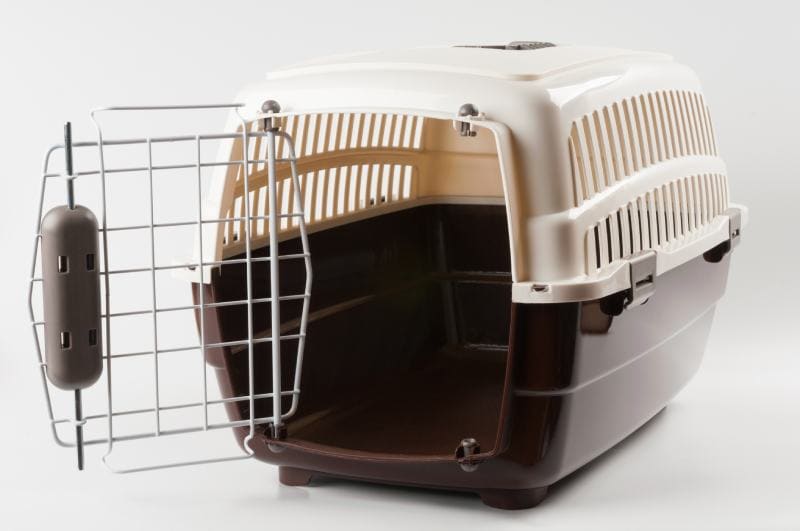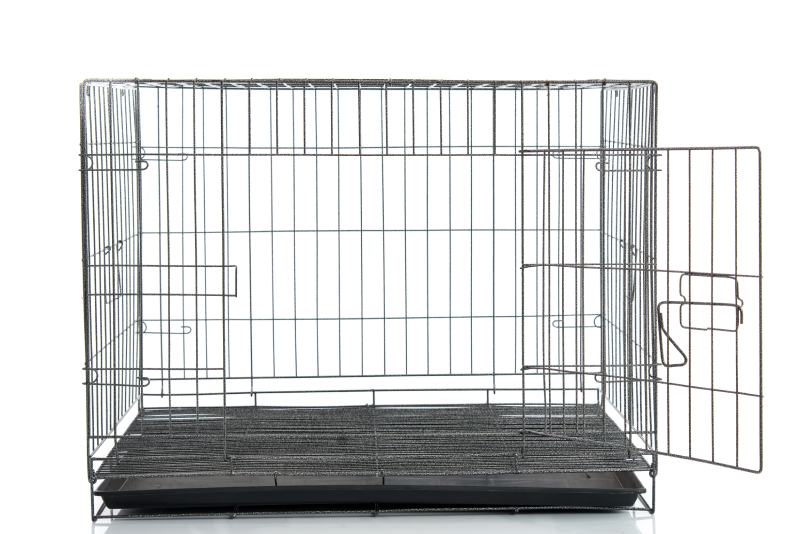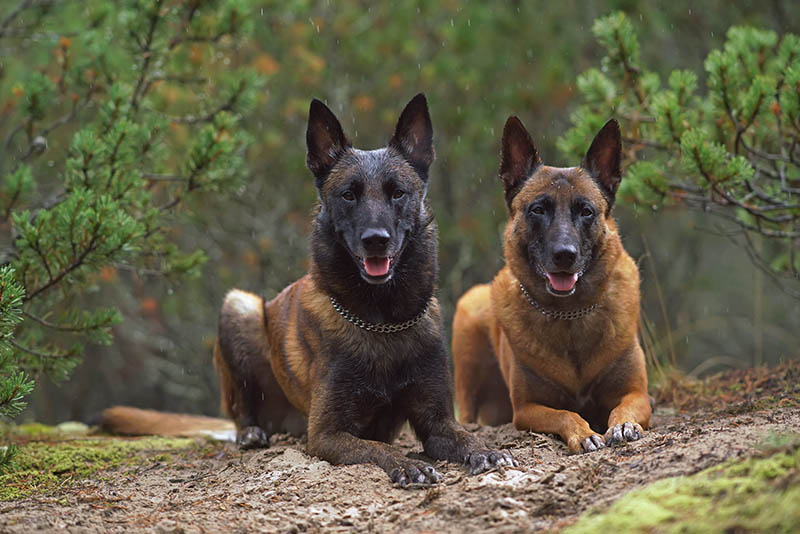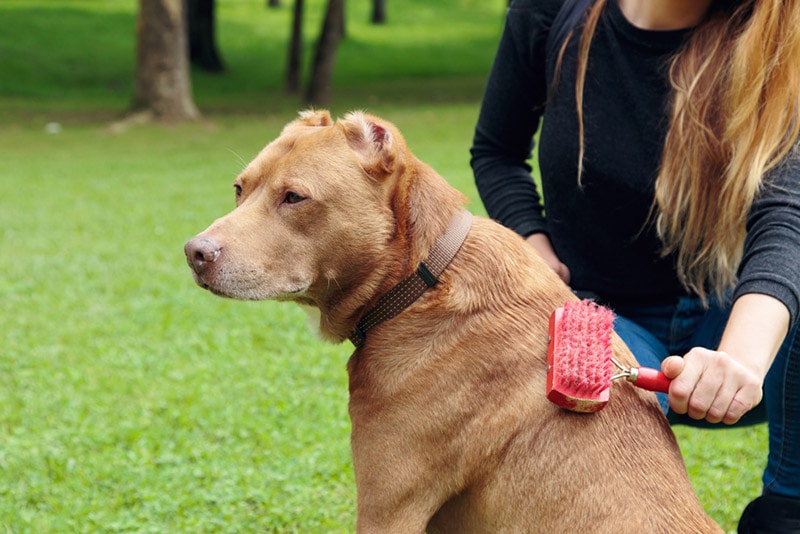What Size Crate Does a Boston Terrier Need? Tips For Choosing a Comfortable Size
By Oliver Jones
Updated on

If you’re planning on bringing home a Boston Terrier, you’re likely wondering what size crate you need. After all, you want your new pup to be comfortable and safe. While there are many factors to consider when selecting the perfect crate for your Boston Terrier, size is perhaps the most important. Overall, it’s best to make sure that your new pup has a comfortable, secure home that is the perfect size for their needs. Let’s discuss.
What Size Crate for Boston Terriers?
Typically, a crate that’s about 24 inches will be ideal for your Boston Terrier. This will allow your puppy to move around freely without being cramped, and it’ll be small enough for you to easily reach to retrieve a dog that may be a bit shy. Your average Boston Terrier is about 16 to 17 inches tall and weighs about 15 to 25 lbs. These dogs are relatively small compared to other dog breeds and generally only require small crates compared to bigger dogs such as Pit Bulls, Boxers, or Rottweilers.
A rule of thumb is that you want your dog to be able to turn around and stretch out comfortably, whether it’s standing up or lying on its back. You also want to consider what the crate will be used for. For example, if the crate is going to be used to house the dog while they are being trained or while you are away, a slightly larger crate may be necessary. This will provide them with enough room to move around without feeling cramped. Crates that will be used primarily for transportation should be just big enough so that your dog doesn’t move around too much during the drive (for safety reasons).

Types of Dog Crates to Consider for Your Boston Terrier
Not all crates are created equal and there are a few key considerations to keep in mind when choosing the best one for your Boston Terrier. From plastic and wire crates to soft-sided crates and even travel crates, there are plenty of options to choose from. Each type of crate has unique advantages that make it ideal for certain situations and scenarios. Let’s look at the most common types.
1. Plastic Dog Crates
Plastic crates are sort of a compromise between metal and soft-sided crates. Many owners don’t like these crates because they can look a bit cheap and low-quality at first glance – but they can serve a purpose. For example, if you only need to use the crate for a day or two, they may be ideal.
Also, a plastic dog crate will be stronger than a soft-sided one and will provide more privacy than a wire crate. But plastic crates can be difficult to clean depending on which type you buy. Overall, these crates are great for short trips by car or plane, and because they only have one view, they can keep reactive dogs calm and still.

2. Soft-Sided Crates
These crates are essentially hard on the exterior and soft on the interior of the cage. They’re usually made with mesh walls and either metal, plastic, or hard rubber exteriors. Soft dog crates may not be the best choice for every dog or situation. These soft-sided dog carriers are perfect for car and plane rides. They are lightweight and easy to transport. These crates are also approved by many airlines for use in-cabin.
On the downside, pups that like to scratch, chew, or feel disoriented from being contained in soft-sided dog crates may not be able to use them. These crates are a bit difficult to clean and aren’t suitable for dogs that aren’t potty-trained or have not been crate trained.
3. Metal Crates
These crates are probably the most common, especially with groomers, vets, breeders, and other professional dog caretakers. Why? Because they’re the most durable. They’re made from metal wires and provide excellent support and full visibility for you and your pup. For dogs that chew a lot, metal pet crates can be an ideal choice. It’s almost impossible for them to destroy it – though some larger breeds may be able to.
But overall, they’re resilient, and have great visibility and tons of airflow. They can also be cleaned easily – and with metal crates, you don’t have to worry about bad odors persisting. Many models have bottom trays that can slide out to clean. On the downside, they’re usually more expensive and can be challenging to carry – so they’re maybe not the best temporary crate choice.

4. Wooden Crates
Wood crates aren’t as common, but they do exist. These crates are lighter than metal crates but are still heavier than most plastic ones. They can be stylish and be used as a fashionable home choice. Because they’re a bit heavy, they’re not ideal for traveling or groomer trips.
Wooden crates can be difficult to clean and removing odors may be a challenge. Also, wooden crates don’t suit all dogs-especially those prone to scratching and biting. Although they still have all the functions of the other types of crates, these crates lack the simplicity and ease of use of other crate materials.
Wrapping Things Up
When it comes to finding the right size crate for a Boston Terrier, there are a few factors to consider. The size of the crate should be based on the size of the dog and the amount of space they need to be comfortable. If the crate is too small, the dog may feel cramped and uncomfortable, and if it is too large, the dog may feel overwhelmed and less secure – some owners think that bigger is better and this isn’t always the case. Boston Terriers are relatively small, so finding a suitable crate for these pups should be fairly easy.
Featured Image Credit: JStaley401, Shutterstock













